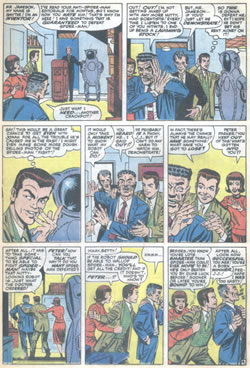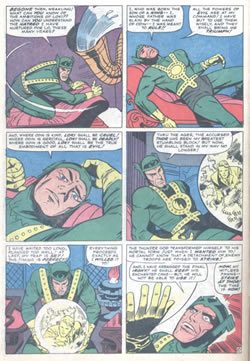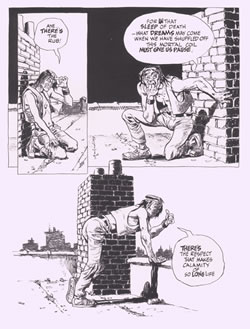
Some fine work by Steve Ditko on Amazing Spider-Man. Look at the body language in the last five panels on the page as Peter Parker persuades Jameson to buy into another crackpot scheme to discredit Spider-Man.

This page featuring a brooding Loki from Jack Kirby's Thor, is sending entirely the wrong message. Or maybe Kirby intended Loki to come across as a theatrically camp character ... who knows?

Generally acknowledged as the king of comic artists, the late Will Eisner drew this adaptation of the soliloquy from Hamlet - and it features some embarrassingly bad body language which just adds up to bad acting ...
Click the image to see an enlargement
Copyright © 2020 The Story Works | Contact | Other sites hosted by TheStoryWorks